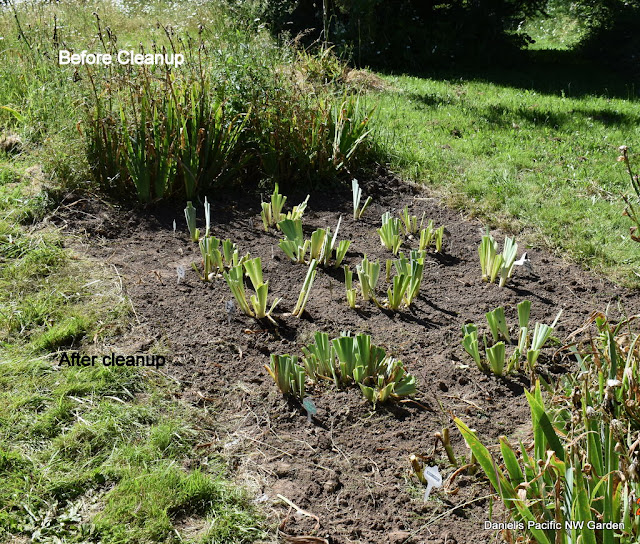I've been wanting to propagate the Peach Leaf Curl Resistant Peach that I grew from a seed of "Oregon Curl Free" peach a few years ago. This year, once again, no leaf curl at all. Unfortunately, this tree is in a bad spot in the chicken yard, becoming shaded between two fast growing shade trees. I would like to propagate it so that I can grow it in a better spot. Also, I would like some to share. It's a good peach and thrives, at least on it's own roots, in this area. That's unusual if not unheard of.
Originally I called this Cowlitz Peach, for the neighboring Cowlitz County and in honor of the people who lived here. However, I'm concerned about inappropriate use of a Native name, so I decided to rename it "Sunny Day Peach".
In March I tried grafting scion from Sunny Day Peach onto Lovell rootstock, but they didn't take. I don't have good results grafting peach. Reading some hobbyist forum threads, maybe it was the cooler weather. The Lovell rootstock stayed alive and continued to grow, just not the scion.
A few days ago I grafted a bud onto the stem one of those Lovell trees. It continues to look green, so today I decided to try the other one.
Here is the rootstock tree. I cut off the dead scion from the top.
Here is a growing stem from the Sunny Day peach tree. I wanted a vigorous looking, fresh green stem with as stout a bud as I could find. This wasn't very stout but it has to do. I put the stem into a glass of water until the rootstock was ready.
Then I cut a patch from the rootstock. This requires that the cambium layer be easily slipped from the stem, which this being June and these being well watered, it did. I cut a patch that I hoped would exactly match the piece that I remove from the scion. My cutting tool is a single edge razor. This photo shows the beginning of the cut. In the end, it was a vertical rectangle removed from the stem.
Here is the patch that I cut from the scion stem. I made it as close to exactly the same as the rectangle that I cut from the rootstock stem.
Then I eased the patch into the opening. I had to trim slightly. but it turned out to be a snug fit. I wrapped with plastic tape strip, which is a strip cut from a Zipper freezer bag, tied that snugly, and decided it wasn't snug enough so I overwrapped with a rubber band.
Now to nurture and coddle this little tree. The goal at this point is just healing the grafted patch and stem together. When that is done, the top can be cut from the tree to encourage the bud to grow.
I really don't know if this will work. I've done it with plums and cherries. Peaches are more challenging for me. My thought at this time is that if it needs warm to heal, well, it's warm now. I will keep it in the shade and water diligently for a week or so, then maybe return it to a sunnier spot.
So, will there be another "Sunny Day" Peach tree? I don't know. Keeping my fingers crossed, and I will try to take good care of these grafts.

















































